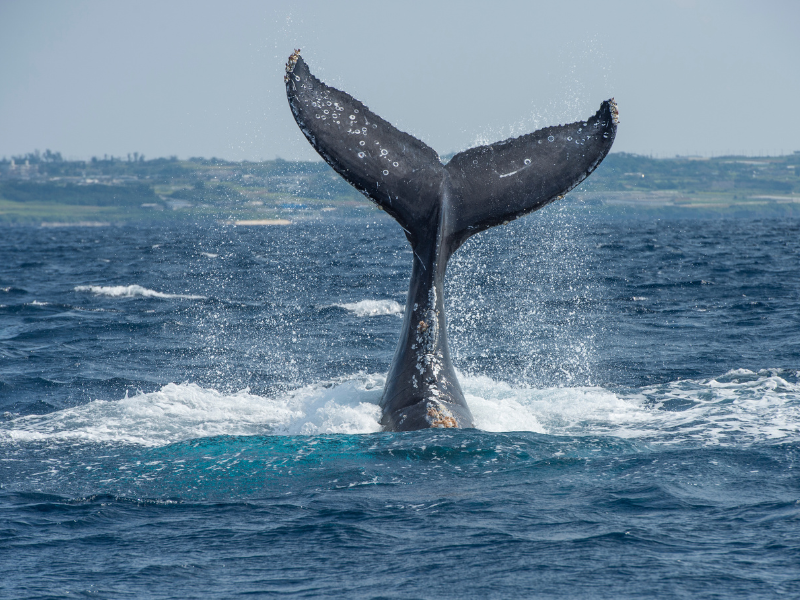At a Senate hearing last spring, what was left out of the testimony was perhaps more telling than what was heard.
On May 17, the Senate Committee on Commerce, Science, and Transportation, chaired by Sen. John McCain (R-AZ), held a hearing on “Science Behind Global Warming.”
Five witnesses graced the “science” panel: On the “Gore” side, Robert Watson, head of the United Nations Intergovernmental Panel on Climate Change (IPCC), Rob Bradley of the University of Massachusetts, Kevin Trenberth of the U.S. National Center for Atmospheric Research, and climate modeler Jerry Mahlman of the National Oceanic and Atmospheric Administration. The lone “Contra” was satellite guru John Christy from the University of Alabama at Huntsville.
Once again, the “Hockey Stick” graph reared its ugly blade. That is the temperature “reconstruction” (we have no real thermometer records in sufficient density for much more than the last 100 years) back to the year 1000, originally crafted by the University of Virginia’s Michael Mann. Bradley has generally been the second author on most of Mann’s papers on that topic, so he certainly has authority to testify.
Mann’s hockey stick
The famous Hockey Stick chart shows a general decline in estimated temperatures of about 0.4°C from 1000 A.D. to 1900, followed by a rise of about 0.6° that begins about 100 years ago. Observers at the hearing tell Environment & Climate News that the senators were left with the definite impression that the Hockey Stick begins to warm only very recently.
Whether or not this impression was intended depends upon your feelings about nuances of speech. But one thing is certain: In reality, that impression is false. The temperatures clearly began their rise 100 years ago, in a fashion that graphs pretty much like a straight line.
All witnesses mentioned climate model forecasts for the future. None of them noted that virtually every one of the dozens of climate models available predicts that, as human activity warms the atmosphere, it warms at a constant (not increasing) rate—that is to say, in a straight line.
Which means that if witnesses are asserting that the Hockey Stick’s “blade” is a result of human warming, then roughly the same rate of warming can be expected in the coming 100 years. Otherwise the functional mathematical form of virtually every climate model—which defines the so-called “scientific consensus” on future warming—is wrong.
One for our team
The pivotal point that somehow eluded our elected officials is that accepting the Hockey Stick temperature history in fact militates against the overall urgency of the global warming issue.
Every climate model predicts that human warming is greater in winter than in summer. In his testimony, Christy alluded to the likelihood of that being a net positive influence. In fact, all climate models state that once a winter-summer difference is established, it, too, continues at a proportional—not increasing—rate.
Some of the scientific contributors to Environment &Climate News have published several papers in the scientific literature demonstrating that the winter-summer warming ratio exceeded two-to-one in the last half of the twentieth century, and that, within the winter, the vast majority of warming took place in the coldest air masses of Siberia and northwestern North America—which are inherently more lethal than any other because of their frigidity.
Is the Hockey Stick itself a scientific outlier? Most climate scientists have believed that the “Little Ice Age” and “Medieval Climatic Optimum” (the warm period that preceded it) were global in extent; yet neither appear in the Hockey Stick history. That omission may be because the data sources used for the Hockey Stick, such as tree rings and corals, are far from perfect annual and global thermometers. For example, tree rings largely record summer temperatures; yet winter variation is more characteristic of human climate change. Corals grow mainly in tropical oceans, where climate fluctuations are probably small compared with global changes.
But if the Hockey Stick record passes the acid test of science history (as few things in climate change have—recall that a mere 25 years ago, an ice age was thought to be imminent), it argues against many commonly held notions about climate. It holds that natural, regional changes (as opposed to global ones), such as the Little Ice Age and the Medieval Climatic Optimum before it, were sufficient to encourage the colonization and subsequent colonial extinction of the Vikings in North America. It then becomes incumbent upon scientists to demonstrate that global warming increases the likelihood of greater regional temperature variability. But as my colleagues and I showed in the journal Climate Research, variability has been significantly decreasing with warming.
Wiping out Kyoto
Not one of the witnesses quantitatively analyzed the effect of the Kyoto Protocol, either for cost or for impact on climate.
But those senators need to hear that every economic model, with the exception of one outlier projection from the White House Council of Economic Advisors, predicts enormous cost. And they should hear something else also: Each and every climate simulation fails to show a meaningful reduction in warming if the Kyoto Protocol were to be implemented. Even a midrange model, from the U.S. National Center for Atmospheric Research, finds that the amount of global surface temperature change induced by the Kyoto Protocol—if every single nation fulfilled its commitments—would be a mere 0.07ºC by the year 2050, or 0.14ºC by the year 2100.
The IPCC’s Watson was hardly straightforward when he told McCain’s committee that because Kyoto would change the time of carbon dioxide doubling by 10 years, the Protocol would “buy time” in any meaningful fashion. Climatically, this translates into the same triviality calculated above.
Watson also told the panel that his estimates for the next 100 years were warmer than others because they removed the effects of cooling sulfates (the IPCC’s latest, greatest excuse for what it acknowledges is a lack of expected warming) more rapidly than before. Watson said he expects the greatest reductions from China, which makes him unusually prescient about the intricacies of Chinese domestic policy. (Recall the rather glaring example related to the emissions of nuclear missiles where we have had considerable difficulty in even back-calculating the behavior of this substantial nation.)
The truth of the matter is that the Hockey Stick, in combination with the climate models, argues convincingly that global warming is likely to be a lesser threat than the IPCC imagined, and all calculations show we cannot do much about it, anyway.
The remedies Watson proposed to McCain’s committee—forestation, no-till agriculture, creating a hidden tax by “making” carbon a commodity, and solar energy—do not even guarantee that we will meet Kyoto’s ambitious requirements. Trenberth proposed a dollar-a-gallon increase in the price of gasoline; he also testified he believed people could be fooled into not noticing it enough to gripe politically, if Washington slipped it in there a penny at a time. (Has he read any newspapers this year?) Bradley proposed tax credits similar to those in the Carter administration—great idea, given the popularity of gas lines resulting from the Carter energy policy!
So there we have it. First we (hockey) stick it to the Senate Committee, and then we stick it to the American public.
According to Nature magazine, University of Virginia environmental sciences professor Patrick J. Michaels is probably the nation’s most popular lecturer on the subject of climate change. Michaels is the author of Sound and Fury: The Science and Politics of Global Warming.
References
Michaels, P.J., et al., 1998. Analysis of trends in the variability of daily and monthly historical temperature measurements. Climate Research, 10, 27-33.
Mann, M., et al., 1999. Northern Hemisphere temperature during the past millennium, inferences, uncertainties, and limitations. Geophysical Research Letters, 26, 759-762.



